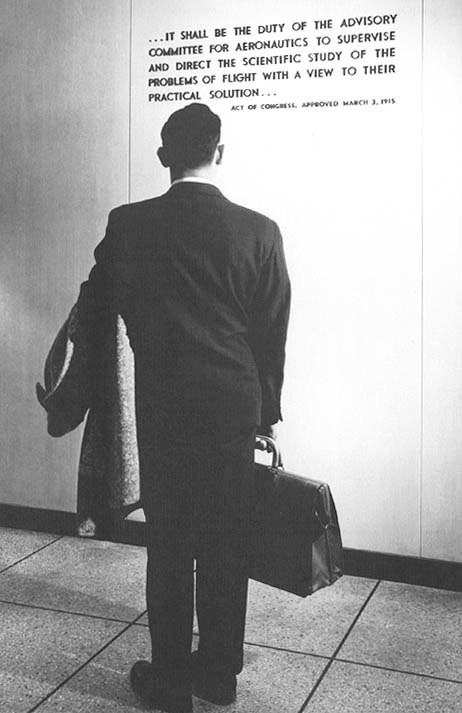|
Arup S-2
The Arup S-2 was the first commercial development of Cloyd Snyder's Arup S-1 low aspect ratio wing aircraft. Design The Arup S-2 featured a straight leading edge wing with a trailing edge that tapered to the rear of the aircraft giving it a guitar pick shape when viewed from above. An M6 airfoil was chosen over its predecessor's sharp edged, modified Clark-Y airfoil. The large trailing edge control surfaces were mixed for pitch and roll control, but were assisted by small, movable, semi-circular wingtips that could provide additional roll control. Conventional landing gear was used, faired with wheel pants. The access to the cockpit was from a belly mounted hatch. Visibility was enhanced with celluloid panels on the aircraft's belly. Operational history The prototype S-2 was test flown by Glen Doolittle. The STOL aircraft could fly at up to 35 degrees angle of attack without stalling. The aircraft was demonstrated across the country at events like the Indianapolis 500 and the ... [...More Info...] [...Related Items...] OR: [Wikipedia] [Google] [Baidu] |
WikiProject Aircraft
A WikiProject, or Wikiproject, is an affinity group for contributors with shared goals within the Wikimedia movement. WikiProjects are prevalent within the largest wiki, Wikipedia, and exist to varying degrees within Wikimedia project, sibling projects such as Wiktionary, Wikiquote, Wikidata, and Wikisource. They also exist in different languages, and translation of articles is a form of their collaboration. During the COVID-19 pandemic, CBS News noted the role of Wikipedia's WikiProject Medicine in maintaining the accuracy of articles related to the disease. Another WikiProject that has drawn attention is WikiProject Women Scientists, which was profiled by ''Smithsonian Magazine, Smithsonian'' for its efforts to improve coverage of women scientists which the profile noted had "helped increase the number of female scientists on Wikipedia from around 1,600 to over 5,000". On Wikipedia Some Wikipedia WikiProjects are substantial enough to engage in cooperative activities with outsi ... [...More Info...] [...Related Items...] OR: [Wikipedia] [Google] [Baidu] |
NACA
The National Advisory Committee for Aeronautics (NACA) was a United States federal agency that was founded on March 3, 1915, to undertake, promote, and institutionalize aeronautical research. On October 1, 1958, the agency was dissolved and its assets and personnel were transferred to the newly created National Aeronautics and Space Administration (NASA). NACA is an initialism, pronounced as individual letters rather than as a whole word, as was NASA during the early years after being established. Among other advancements, NACA research and development produced the NACA duct, a type of air intake used in modern automotive applications, the NACA cowling, and several series of NACA airfoils, which are still used in aircraft manufacturing. During World War II, NACA was described as "The Force Behind Our Air Supremacy" due to its key role in producing working superchargers for high altitude bombers, and for producing the laminar wing profiles for the North American P-51 Mustan ... [...More Info...] [...Related Items...] OR: [Wikipedia] [Google] [Baidu] |
Chyeranovskii BICh-7
The BICh-7 was a tailless sport/touring aircraft designed and built in the USSR from 1929. Development Chyeranovskii designed an enlarged BICh-3 The BICh-3 () was a tailless research aircraft designed and built in the USSR in 1926. Development After Cheranovsky's first tailless flying wing gliders, the Cheranovsky BICh-1, BICh-1 and Cheranovsky BICh-2, BICh-2, he continued developing th ..., at approximately 1.5 scale, with tandem open cockpits, underslung elevons (à la Junkers) centreline mono-wheel, wing-tip rudders with skids with no tail. Flight testing commenced in 1929 but was soon halted due to the very poor handling characteristics which rendered the BICh-7 almost impossible to take off. The BICh-7 was completely rebuilt as the BICh-7A, modifications included: enclosed tandem cockpits, a conventional style tail-skid undercarriage, and a fin with rudder faired into the rear of the cockpit nacelle. Flight tests resumed, in 1932, with much improved handling other th ... [...More Info...] [...Related Items...] OR: [Wikipedia] [Google] [Baidu] |
Lifting Body
A lifting body is a fixed-wing aircraft or spacecraft configuration in which the body itself produces lift (force), lift. In contrast to a flying wing, which is a wing with minimal or no conventional fuselage, a lifting body can be thought of as a fuselage with little or no conventional wing. Whereas a flying wing seeks to maximize cruise efficiency at Subsonic flight, subsonic speeds by eliminating non-lifting surfaces, lifting bodies generally minimize the drag and structure of a wing for subsonic, supersonic and hypersonic flight, or spacecraft re-entry. All of these flight regimes pose challenges for proper flight safety. Lifting bodies were a major area of research in the 1960s and 1970s as a means to build a small and lightweight crewed spacecraft. The US built a number of lifting body rocket planes to test the concept, as well as several rocket-launched re-entry vehicles that were tested over the Pacific. Interest waned as the US Air Force lost interest in the crewed missio ... [...More Info...] [...Related Items...] OR: [Wikipedia] [Google] [Baidu] |
Continental A-40
The Continental A40 engine is a carbureted four-cylinder, horizontally opposed, air-cooled aircraft engine that was developed especially for use in light aircraft by Continental Motors. It was produced between 1931 and 1941. Design and development The A40 was introduced in the depths of the Great Depression. At the time there were a number of small engines available but all suffered from either high cost, complexity, or low reliability. The A-40 addressed all those shortcomings and was instrumental in the production of light aircraft in the difficult economic constraints of the period. The A-40-4 introduced an increase in power to . The engine later inspired the A-50 and subsequent engines.Christy, Joe: ''Engines for Homebuilt Aircraft & Ultralights'', pages 8-9. TAB Books, 1983. The A40 featured single ignition until the A-40-5 version, which introduced dual ignition. All engines in this family have a 5.2:1 compression ratio and were designed to run on fuel with a minimum ... [...More Info...] [...Related Items...] OR: [Wikipedia] [Google] [Baidu] |
Old Rhinebeck Aerodrome
The Old Rhinebeck Aerodrome is a living museum in Red Hook, New York, Red Hook, New York, adjacent to the town of Rhinebeck (town), New York, Rhinebeck. Founded in 1958, it owns many examples of airworthy aircraft from the Aviation in the pioneer era, pioneer era of aviation, Aviation in World War I, World War I, and the Aviation between the World Wars, Golden Age of Aviation between the world wars, and a collection of roadworthy antique automobiles. History Aviation enthusiast Cole Palen founded the aerodrome in 1958, partially inspired by the Shuttleworth Collection in England. Palen collected aircraft "spanning from 1900 up to the start of World War II," restoring and regularly flying them at airshows as his alter-ego, the "Black Baron of Rhinebeck." These airshows continue today from mid-June through mid-October, and biplane rides are available before and after events. The first air show took place in 1960, and the aerodrome was "officially incorporated in 1966." Early aerod ... [...More Info...] [...Related Items...] OR: [Wikipedia] [Google] [Baidu] |
Reading, Pennsylvania
Reading ( ; ) is a city in Berks County, Pennsylvania, United States, and its county seat. The city had a population of 95,112 at the 2020 United States census, 2020 census and is the List of municipalities in Pennsylvania, fourth-most populous city in Pennsylvania after Philadelphia, Pittsburgh, and Allentown, Pennsylvania, Allentown. Reading is located in the southeastern part of the state and is the principal city of the Berks County, Pennsylvania, Greater Reading area, which had 420,152 residents in 2020. Reading gives its name to the now-defunct Reading Company, also known as the Reading Railroad and since acquired by Conrail, that played a vital role in transporting anthracite coal from Pennsylvania's Coal Region to major East Coast of the United States, East Coast markets through the Port of Philadelphia for much of the 19th and 20th centuries. Reading Railroad is one of the four railroad properties in the classic U.S. version of the ''Monopoly (game), Monopoly'' board ga ... [...More Info...] [...Related Items...] OR: [Wikipedia] [Google] [Baidu] |
Mid-Atlantic Air Museum
The Mid-Atlantic Air Museum (MAAM) is an aviation museum and aircraft restoration facility located at Reading Regional Airport in Reading, Pennsylvania. The museum, founded by Russ Strine, the current President, collects and actively restores historic war planes and classic airliners as well as rare civilian and military aircraft. Many of the museum's historic aircraft are often seen on the airshow circuit. Overview The Mid-Atlantic Air Museum has hosted the “World War II Weekend Air Show” annually since 1990. The World War II Weekend is generally scheduled to coincide with 6 June, with an attendance approaching 100,000 people. The museum offers rides in their vintage North American SNJ and in a Stearman Biplane on the second Saturday of the month from May through October excluding the month of June. It has also embarked on an ambitious project to restore its Northrop P-61B Black Widow, recovered from New Guinea in 1989, to flying condition. Mid Atlantic Air Museum al ... [...More Info...] [...Related Items...] OR: [Wikipedia] [Google] [Baidu] |
American Eagle Eaglet
The Eaglet 31 is a United States two-seat tandem ultra-light high-winged monoplane of the early 1930s. Intended as a low-cost aircraft, its limited production run relegated it to a footnote in aviation history. Design and development The American Eagle Aircraft Corporation found that demand for their A-129 biplane and their other models was badly affected by the Wall Street stockmarket crash of late 1929 which ushered in the Great Depression. The small ultra-light, tandem two-seat Eaglet was therefore designed by company president, Edward E. Porterfield, to appeal to pilots with more modest pockets. Porterfield set a realistic goal of manufacturing an aircraft for $1,000. The first advertised price was $995.00. The first model was the 1930 Eaglet 230, initially powered by the 25 h.p. Cleone engine that flew on June 30, 1930. The engine was so underpowered that only solo flights were possible.Underwood 1968, p. 62. Most later Eaglet 230s featured a 30 h.p. "Zeke" Szekely ... [...More Info...] [...Related Items...] OR: [Wikipedia] [Google] [Baidu] |
Radial Engine
The radial engine is a reciprocating engine, reciprocating type internal combustion engine, internal combustion engine configuration in which the cylinder (engine), cylinders "radiate" outward from a central crankcase like the spokes of a wheel. It resembles a stylized Star polygon, star when viewed from the front, and is called a "star engine" in some other languages. The radial configuration was commonly used for aircraft engines before gas turbine engines became predominant. Engine operation Since the axes of the cylinders are coplanar, the connecting rods cannot all be directly attached to the crankshaft unless mechanically complex forked connecting rods are used, none of which have been successful. Instead, the pistons are connected to the crankshaft with a master-and-articulating-rod assembly. One piston, the uppermost one in the animation, has a master rod with a direct attachment to the crankshaft. The remaining pistons pin their connecting rods' attachments to rings ar ... [...More Info...] [...Related Items...] OR: [Wikipedia] [Google] [Baidu] |




